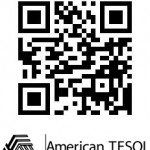Happy Halloween from American TESOL Institute.
Happy Halloween from American TESOL Institute! While this holiday is often associated with spooky costumes, carved pumpkins, and trick-or-treating in the U.S., its roots and global counterparts offer a fascinating cultural tapestry that can inspire TESOL teachers worldwide.
A Multitude of Names for Halloween
Halloween is known by many names, reflecting its rich history and evolution across cultures. These include:
- All Hallows Eve
- All Saints’ Day
- All Souls’ Day
- Hallowe’en
- Samhain
- Hallowmas
- Snap Apple Night
- Feast of the Dead
The Romans significantly influenced Halloween traditions with their own festivals, such as Lemuria, a time to appease restless spirits, and Feralia, a celebration of family ancestors. These customs merged with Celtic traditions like Samhain, forming the Halloween we know today.
Similar Holidays Across the Globe
TESOL teachers can use Halloween as a gateway to explore other cultural celebrations that share similar themes of honoring the dead, community, and transition between seasons. Here are some fascinating global holidays:
- Day of the Dead (Día de los Muertos) – Celebrated in Mexico and parts of Latin America, this vibrant holiday honors deceased loved ones with altars, marigolds, and offerings of food and drink.
- Hop Tu Naa – The Celtic festival of Hop Tu Naa in the Isle of Man predates Halloween and celebrates the end of the harvest season.
- Native American Ghost Suppers – Practiced among some Native American tribes, these gatherings honor ancestors with shared meals and storytelling.
- Shuma Sashti – In Hindu culture, this festival honors departed souls, offering prayers and food to ensure peace in the afterlife.
- Todos Santos (All Saints’ Day) – In Spain and many Spanish-speaking countries, families gather at cemeteries to remember loved ones and share food.
- La Toussaint – In France, this day is marked by placing chrysanthemums on graves to honor the departed.
- Araw ng mga Patay – Known as the Day of the Dead in the Philippines, families clean and decorate graves while sharing meals to honor their ancestors.
- Nos Calan Gaeaf – A Welsh celebration marking the beginning of winter, with traditions tied to spirits and community gatherings.
TESOL Classroom Ideas: Teaching Through Holidays
Halloween and its global counterparts offer TESOL teachers creative ways to incorporate culture into language lessons. Here are some engaging activities:
1. Comparative Culture Discussions
Have students research a Halloween-like holiday from their culture or another country. They can present their findings and compare it to Halloween, practicing vocabulary and public speaking.
2. Themed Vocabulary Building
Teach words related to Halloween, such as “ghost,” “spirit,” “costume,” and “tradition,” along with equivalent terms in other cultures’ holidays.
3. Storytelling Sessions
Encourage students to share folk tales or legends tied to their cultural holidays. This fosters listening and speaking skills while deepening cultural appreciation.
4. Holiday Recipes and Role-Plays
Create role-plays where students “host” a celebration, explaining its significance and customs while sharing “traditional dishes” tied to the holiday.
5. Writing Activities
Have students write essays or poems imagining how Halloween might look if celebrated in their country, blending their cultural elements with traditional Halloween symbols.
Fun Facts About Halloween and Related Holidays
- Samhain: The Celtic festival marking the end of the harvest season is considered the precursor to modern Halloween.
- Snap Apple Night: A Halloween game where participants try to bite apples hanging from a string is said to predict future romance!
- Chrysanthemums in La Toussaint: These flowers symbolize death and are widely used in France to honor loved ones.
- Sugar Skulls: In Día de los Muertos, sugar skulls represent the sweetness and bitterness of life.
- Hop Tu Naa Songs: Children on the Isle of Man sing traditional songs while carving turnips instead of pumpkins.
Bringing Cultures Together
Teaching about Halloween and similar holidays allows TESOL teachers to create inclusive classrooms that celebrate diversity. By exploring these traditions, students learn language in context, gain cultural insights, and appreciate the universal themes of remembrance, community, and transformation.
This Halloween, celebrate the global connections that unite us all. Happy teaching from American TESOL Institute!



